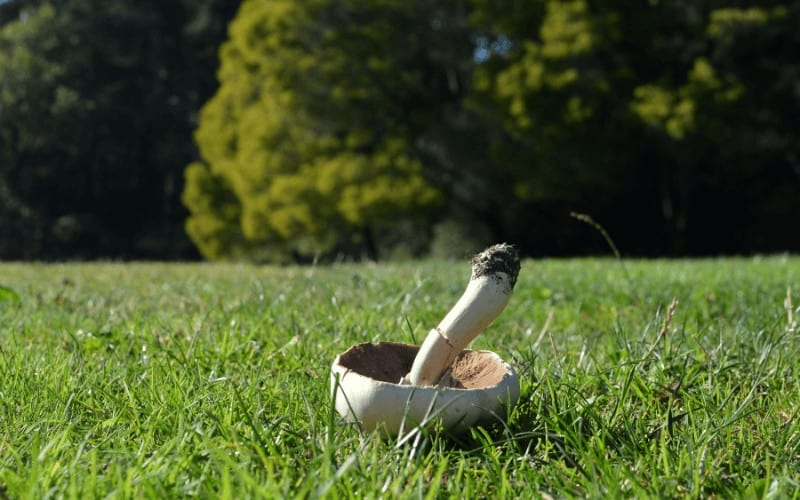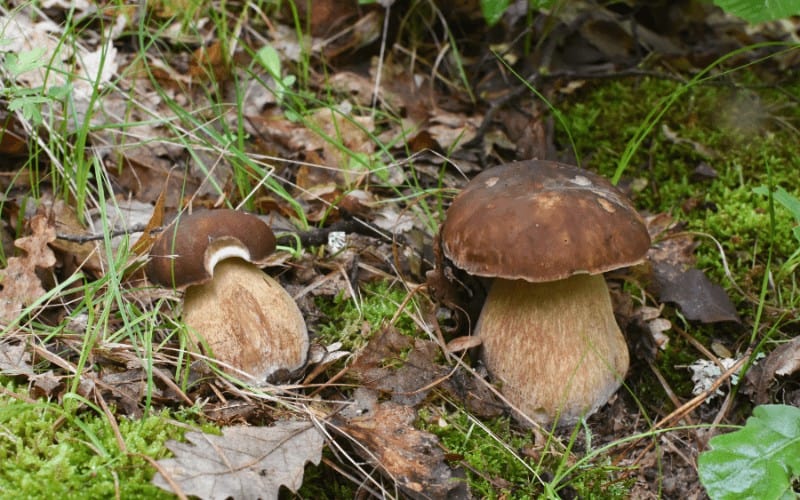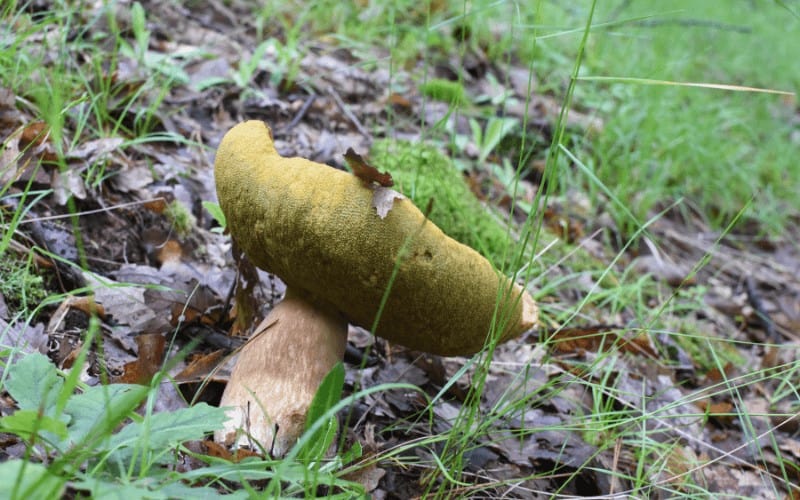If you’ve ever desired to grow your own gourmet mushrooms either to sell and make profits or for your own consumption but don’t know how to start, this is the perfect article for you.
In case you don’t know, gourmet mushrooms, such as shiitake and oyster, are one of the best cash crops for small growers. If you’re able to grow these mushrooms in your garden, you can make good money from them.
In this article, you’re going to learn what gourmet mushroom is, how to grow gourmet mushrooms, as well as the different varieties of gourmet mushrooms.
Let’s get started!
Table of Contents
What Is Gourmet Mushroom?
Before growing gourmet mushrooms, it is important to understand what they really are and understand their life cycle. Gourmet mushrooms are basically fungus feeding on whatever substrates you have chosen to grow it on.
A mushroom substrate could be in form of agricultural waste or natural products, they are substances in which mycelium can thrive and grow. It could be sawdust, coffee waste, teff grass, sugar cane bagasse, hay, straws, etc.
They become the food source for the mycelium to grow (mycelium is the vegetative body for fungi that produces mushrooms).
They grow outwards and spread and can be found on the surface where there are nutrients. Mycelium can be bought from a local supplier or online as mushroom spawn.
In order for mushrooms to grow, the substrates need to inoculated with mycelium or spawn. This is a process where the spawn is added to a treated substrate. Spawns are simply seedlings that have been treated with mycelium to grow mushrooms.
This can happen in a range of controlled environments depending on the kind of mushrooms you will like to grow.
When growing mushrooms, it is important that you support the conditions necessary for them to thrive.
The mushroom substrates are to be prepared properly by adding moisture supplements and should be sterilized and pasteurized.
Why Grow Gourmet Mushrooms?
There are basically two reasons why you should grow gourmet mushrooms. First of all, by growing gourmet mushrooms indoors, you can control the humidity, temperature, and light to give the mushrooms precisely what they need to bloom and when they need it.
With this, you will be able to enjoy much larger harvests as well as more profits than from log-grown mushrooms.
Secondly, by controlling the growing conditions of gourmet mushrooms, you can produce up to 6 crops per year in the same space, which also means more income and steady cash flow.
Types Of Gourmet Mushrooms
There are different varieties of gourmet mushrooms, which include:
- Shiitake mushrooms
- Maitake mushrooms
- Enoki mushrooms
- Chantelle mushrooms
- Motel mushrooms
- Porcini mushrooms
- Blewits or bluette mushrooms
- Oyster mushrooms
It’s worth noting that oyster mushrooms one of the fastest-growing mushrooms.
Most hobbyists start out with oyster mushrooms because they are the easiest to grow and are high yielding commercially compared to shiitake mushrooms that could take twelve to fourteen weeks to grow.
How To Grow Gourmet Mushrooms (4 Easy Ways)
Having gone through what gourmet mushroom is and the different types of gourmet mushrooms, let’s now look at how to grow gourmet mushrooms.
There are different ways to grow these mushrooms, and we’re going to discuss all of them below.
1. Straw Method
You can get a plastic bag, medium or large-size straws, and buy mushroom spawn from a local supplier.
Firstly, you have to pasteurize your straw by cutting them then boiling the straw in the water at 75 degrees Celsius for an hour, this will help to kill bacteria from the straw.
Take out the straws with a tong to avoid touching with your hands and let the water sip out of them and cool down.
- You can kill the spawn if you put it into the straw when the straw is still very hot
- Stuff the straws into the plastic bags and put them in your spawn
- Make sure the mouth of the plastic bag is properly covered or tied
- Make holes in the plastic bag with a sterilized nail
- Make sure your straws are damp and keep your mushrooms out of direct sunlight
- The mushroom spawn will develop into mycelium and cover the plastic bag
- Mycelium looks like a white fuzzy, cotton-like substance
- After four weeks you will begin to see the mushrooms forming
They usually grow in clusters and should be kept moist always. Remember to spray the plastic bag with water to keep it moist.
2. Waste coffee grounds
The beauty of growing oyster mushrooms on coffee waste is that the grounds are already pasteurized by the brewing process; which means you can completely cut out this step (the process of pasteurizing).
Not needing to sterilize or pasteurized your growing substrate also means that it will be very easy to get started and you won’t be needing costly equipment. You can mix in straw or sawdust with your coffee waste.
Adding straw will not be necessary if you grow in small quantities of 1kg substrate bags or less.
However, adding straw or sawdust may be necessary if you are growing mushrooms in larger quantities, this is because coffee particles are small in size. This means the substrate can become too dense and compact, which leads to a poor exchange of air in the bag.
Straw or sawdust breaks up the density of the coffee grounds and creates better air exchange in the substrate.
- Fill in your coffee waste in a plastic bag add the spawn and seal the bag
- Leave your bags in a warm (20-24C) and dark place
- Check every few days to see the white mycelium starting to grow across the coffee
- After 2-3 weeks, your bags should be fully colonized, and bright white
- Cut holes in your bag with a sterilized nail
- Place in a shaded spot with some indirect light (oyster mushrooms need some indirect sunlight to grow properly)
- Remember to spray with water every day to keep it moist
- Your mushrooms will begin to grow in around 5-10 days
- Keep spraying regularly for another 5-7 days as they double in size each day
Your bag of spawn can still be used to grow a second crop but first, you must rehydrate the spawn after cutting of the mushroom.
Always remember to spray daily.
3. Logs
Mushrooms can grow perfectly in a log of wood. This is preferable when growing shiitake mushrooms and we will be using sawdust spawn for this.
You can use a drill to create holes in the logs, these holes should be about four to six inches apart and in a row. You can turn the log over and create more holes in a row.
- Fill the sawdust spawn into the drilled holes
- Cover the holes with wax to keep the log damp and make sure it doesn’t dry out
- Find a good location to store and incubate the logs preferably a place with easy access to water
- The colonization period is between 8 to 18 months for the shiitake mushrooms.
4. Toilet paper
Toilet paper can be used as a substrate, and you will need a bag, a pair of rings, and boiling water. Firstly, you can pull out the cardboard tube from inside the roll, (tissue paper).
Using your tongs, submerse the toilet paper roll into the boiling water for at least 4 to 5 seconds. If it stays in too long the roll might start to melt.
The whole roll has to be submerged in the boiling water, pull it out with the tongs and place on a board, allow the water to drain off, the tissue paper only has to be damp.
Allow to sit for about 25 minutes to cool, making sure your hands are clean, feel the inside of the center of the roll. If it isn’t too hot to touch, then you can transfer the tissue paper to the plastic bag that already has your mushroom spawn.
Using your tongs, place the roll in a disk filter bag. Pack spawn into the center of the roll and don’t forget to open up holes around the sides and top of the bags.
Now, close up the bag properly if you are using a ziplock bag, you can leave about 1 inch of the bag open to air. Store the bag in a dim/dark area
In about four weeks, the roll should be covered in mushroom mycelium, which is white in color.
Remove rolls and place in a well-lit area at room temperature. Remove the rubber band and open the bag to increase airflow. Your mushrooms should begin fruiting in a week. Always remember to spray your roll daily or when it looks dry.
You can close up the bag, after the first harvest, wait three weeks your bag can begin fruiting again 3 to 4 more times.
How Long Does It Take To Grow A Gourmet Mushroom?
The growth of a mushroom depends on the kind of mushroom you want to grow, the environment, and the kind of substrate in use. Like I said earlier, oysters are the fastest-growing mushrooms.
If you want them to grow in a very short period of time, it’s preferable you make use of sawdust or straws as your substrates. It will take about 3-5 weeks, making use of logs may take up to six months.
For mushrooms like shiitake, they take longer to grow because their mycelium is not as aggressive as an oyster and will require a longer inoculation time.
Shiitake can also be very picky about the substrate being used. Growing shiitake on logs may take a long period of time, and they do well on oak.
So, once you have the logs, and they have been inoculated with your spawn and sealed, they need a period (spawn run) of 8 to 18 months for the fungus to “colonize” and grow through the log.
You can do this by laying four logs horizontally, then another four on top in the other direction. Maitake mushrooms will take at least four months to grow indoors and a year when cultivated outdoors, they grow best in damp conditions.
Chantelle mushrooms are usually found in hardwood forests, they mostly grow on trees and it can take several years after inoculation before you see any growth.
Finally, enoki mushrooms can grow within two to three weeks or a month after its inoculation.
FAQs About Gourmet Mushrooms
Can I grow gourmet mushrooms in my area?
Yes, you should be able to grow gourmet mushrooms in your area. Because both shiitake and oyster mushrooms can be grown indoors, the outside climate doesn’t really affect them.
If there’s a suitable space in your area, such as a garage, shed, barn, a basement, greenhouse, or even a spare room that is free, you can use the space to grow gourmet mushrooms.
Do gourmet mushrooms have any special nutritional value?
Yes, both shiitake and oyster mushrooms have strong nutritional and medicinal values. For instance, these mushrooms are packed with antioxidant properties that help to protect cells in the body, high levels of vitamin C, zinc, niacin, calcium, potassium, and vitamins B1 and B2.
Additionally, scientific studies have shown that shiitake mushroom offers strong antiviral, cardiovascular, and cholesterol-lowering support. It’s also known to boost the immune system in a way that may possess cancer-preventing properties.
Can I grow shiitake and oyster mushrooms in compost?
Yes, oyster and shiitake mushrooms can be grown in compost; however, there can be some problems and low yields.
Because of this reason, most small commercial growers only grow the mushrooms indoors in a sterilized substrate, such as sawdust or straw, to avoid being contaminated by other wild mushroom spores.
And when the mushrooms have nearly finished their fruiting and you’ve added the sawdust or straw to a compost pile, you will have more flushes of mushrooms to pick, but the yield is very low by then.
Where can gourmet mushrooms be sold?
After harvesting your gourmet mushrooms, especially the oyster and shiitake varieties, you can deliver them to local chefs, grocery stores, food co-ops, and even directly to consumers at the farmer’s market.
Gourmet mushrooms do not ship well, which explains why most of them are usually sold fresh to local buyers.
Related Posts:
- Types Of Succulents
- What Happens If You Grow A Plant Upside Down?
- How To Grow Plants In Plastic Bottles
- How Do I Trim My Oregano Plant?
- Names Of Flowers
Conclusion
Hopefully, you now know how to grow gourmet mushrooms. As you can see, the steps are not entirely difficult.
Therefore, I’d encourage you to take the bull by the horn now and start growing your mushroom. And if you have any questions regarding the steps mentioned here, do not hesitate to reach out to us.







